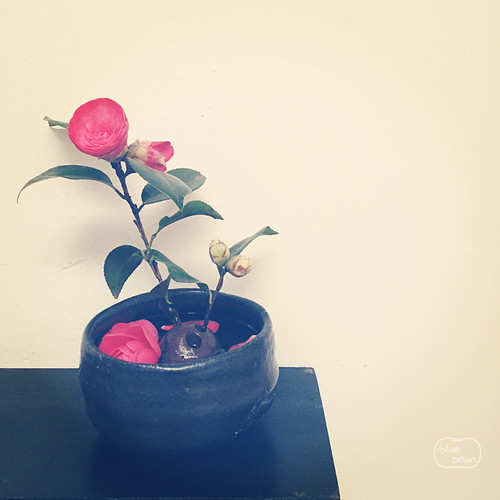
One of the first things I was encouraged to do when I started my journey in ceramics was to “let go.” Specifically, I was to let go of my need for perfection. As a former (but sometimes still practicing) perfectionist, that was very difficult advice to take seriously. But if you work long enough with natural materials, you learn quickly that they do not lend themselves to perfect surfaces, lines and symmetries.
Then one day as I was lamenting about a piece that came out of the kiln with funny glaze drips, somebody told me it was “wabi sabi.” Being unfamiliar with the term, I looked it up. Wikipedia, as usual, came through with a helpful description.
“Wabi-sabi represents a comprehensive Japanese world view or aesthetic centered on the acceptance of transience and imperfection. The aesthetic is sometimes described as one of beauty that is “imperfect, impermanent, and incomplete”… Characteristics of the wabi-sabi aesthetic include asymmetry, asperity (roughness or irregularity), simplicity, economy, austerity, modesty, intimacy and appreciation of the ingenuous integrity of natural objects and processes.
Wabi now connotes rustic simplicity, freshness or quietness, and can be applied to both natural and human-made objects, or understated elegance. It can also refer to quirks and anomalies arising from the process of construction, which add uniqueness and elegance to the object. Sabi is beauty or serenity that comes with age, when the life of the object and its impermanence are evidenced in its patina and wear, or in any visible repairs.”
While the wabi sabi aesthetic has roots in the tradition and culture of Zen buddhism, the term has crossed over into more casual use within modern vernacular. It is interesting to note that for all the words used to describe the essence of wabi sabi, it is an idea that is often difficult to put a finger on, especially for those who look at it from a deeper perspective or practice it as a way of life.
Even so, if I may move this discussion away from the philosophical arena, I think the general, more shallow, overarching concept can be applied across cultures. One need only to look closer at the environment that surrounds him to find that very few things in nature are considered “perfect.” One will also observe that that which is subject to the elements will be shaped by them over time.
For the potter, there is a freedom that comes in embracing the imperfect. The bowl shown in the photo above, made by the studio manager, is an example of how wabi sabi may be translated into pottery. Its shape is not perfectly round, its surface displays irregularities, and its color echoes that of a rock. The form is clearly not manufactured in a mass production line but bears the marks of a personal creator.
But it’s one thing to let go of perfection and another thing to actually embrace imperfection. Even as I am still walking along that continuum from accepting that things will not be perfect to celebrating it, I can honestly say that I have come to appreciate the beauty and uniqueness that result from natural and uncontrolled processes… flaws and all.
| CATEGORY: Inspiration | |
|
POSTED by blue bean |
June 18, 2013 |








Leave a Reply